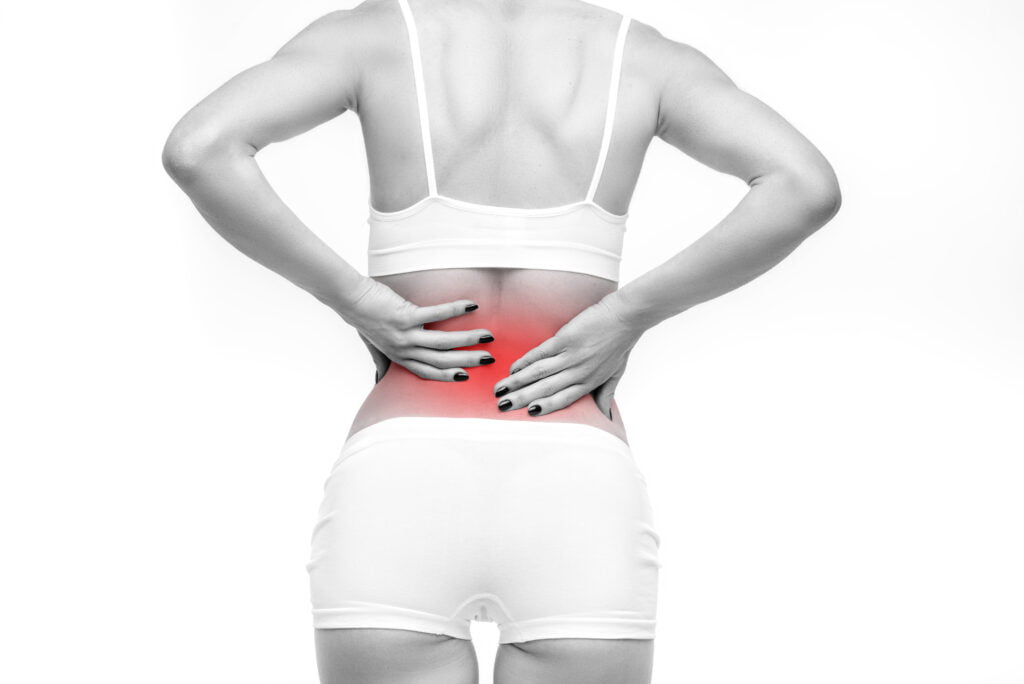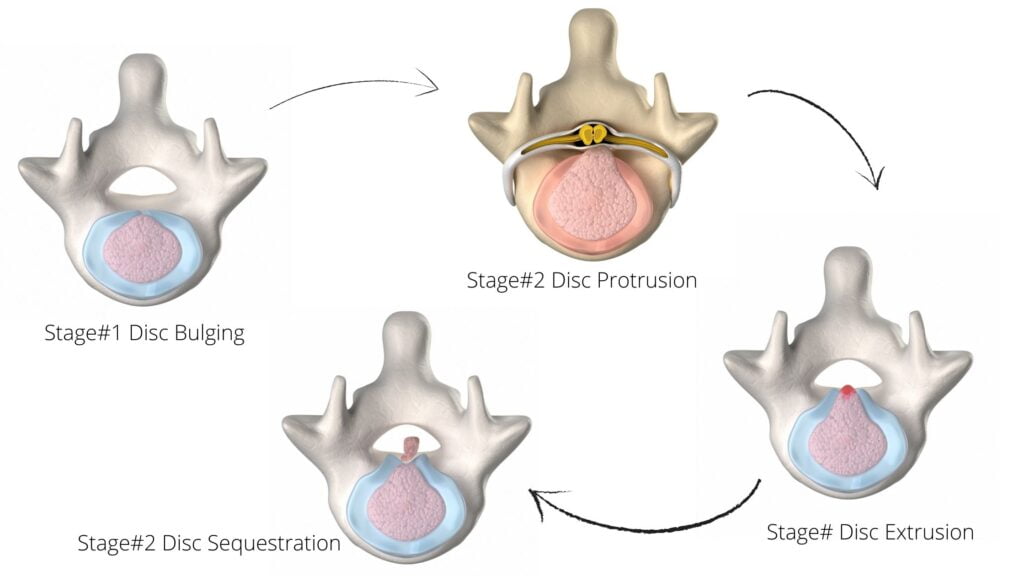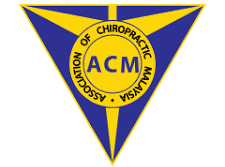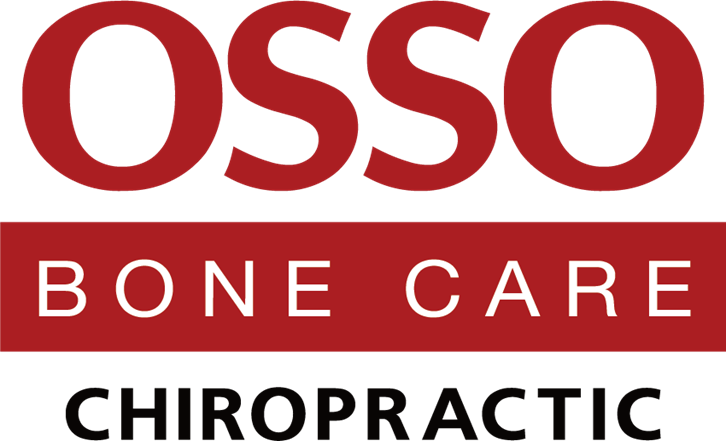Can a Chiropractor Fix a Herniated Disc?
Can a chiropractor really fix a herniated disc?
The idea may seem straightforward, but reality is more nuanced. Back pain strikes people of all ages, from kids to seniors, making it a very common problem worldwide. In fact, a major health study in 2017 found it to be a leading cause of disability.
By exploring the mechanisms behind chiropractic adjustments and their impact on herniated discs, you can gain a deeper understanding of how this alternative therapy fits into the broader landscape of spine health.
What Is a Herniated Disc?

Herniated discs, also commonly referred to as slipped discs or ruptured discs, the soft inner part of a disc bulges or ruptures through the tougher exterior. These discs act like cushions between the vertebrae in your spine, absorbing shock and allowing for smooth movement.
When you experience a herniated disc, the inner gel-like substance leaks out, putting pressure on nearby nerves and causing discomfort. This condition may result in symptoms such as numbness, tingling, and weakness in the affected area.
Chiropractors specialize in non-invasive treatments for spinal conditions like herniated discs, offering spinal adjustments and spinal decompression therapy to “suck’ in disc herniation and bulges to alleviate pain and promote the healing and thickening of the disc, supporting long term recovery.
It’s important to understand that there may not be any noticeable symptoms before a disc actually herniates. In some cases, people might experience some vague discomfort or weakness in the back or some may not experience back pain yet but pulling or numbness in the leg, but these can be easily attributed to other causes like muscle strain or poor posture.
Symptoms of Disc Protrusion or Herniation
Disc protrusion can lead to various symptoms such as pain, weakness, numbness, and tingling as it puts pressure on spinal nerves. These symptoms can vary depending on the location of the herniated disc and the extent of nerve compression. Here is a breakdown of common symptoms associated with disc protrusion:
| Symptom | Description | Affected Area |
|---|---|---|
| Pain | Sharp or dull pain that may radiate down the arms or legs, often exacerbated by certain movements. | Along the spine. |
| Weakness | Reduced strength in muscles, leading to difficulties in lifting or holding objects. | Corresponding limb. |
| Numbness | Loss of sensation in specific areas, making it challenging to feel touch, heat, or cold. | Specific nerve pathway. |
| Tingling | Pins and needles sensation, often described as feeling like the affected area is asleep. | Down the arms or legs. |
| Symptom | Description | Affected Area |
|---|---|---|
| Pain | Sharp or dull pain that may radiate down the arms or legs, often exacerbated by certain movements. | Along the spine. |
| Weakness | Reduced strength in muscles, leading to difficulties in lifting or holding objects. | Corresponding limb. |
| Numbness | Loss of sensation in specific areas, making it challenging to feel touch, heat, or cold. | Specific nerve pathway. |
| Tingling | Pins and needles sensation, often described as feeling like the affected area is asleep. | Down the arms or legs. |
These symptoms can impact daily activities and quality of life, highlighting the importance of seeking appropriate care for disc protrusion.
What Causes a Disc Protrusion?
Factors such as aging, overexertion, injuries, poor posture, and specific lifestyle habits can contribute to the development of disc protrusions in the spine. The wear and tear associated with aging can weaken the discs, making them more susceptible to protrusion.
Overexertion from lifting heavy objects or engaging in strenuous activities can also put excessive pressure on the discs, leading to protrusions. Injuries, especially those involving sudden force like car accidents, can cause the discs to protrude or herniate.
Poor posture, gravity, and specific lifestyle choices such as smoking, obesity, and sedentary habits can further increase the risk of disc protrusion. A recent 2016 study even highlighted how certain lifestyle habits and behaviors in young individuals could contribute to disc protrusions.
A herniated disc also often stems from untreated spinal misalignment. This condition commonly occurs in the lower spine at the L4 and L5 vertebrae, where these segments bear significant weight and provide foundational support for the spine. As misalignment persists, it creates an imbalance in the body’s structure, exerting uneven pressure on spinal discs. Over time, this pressure can force the discs out of their normal position, resulting in a herniated disc.
Understanding these contributing factors is crucial in preventing and managing disc protrusions effectively.
Lack of Blood Flow Can Eventually Cause Disc Herniation
Research has linked poor blood flow with disc degeneration. As we age, blood vessels naturally become less efficient due to the accumulation of atherosclerotic plaques and reduced elasticity. Poor blood flow is also affected by a sedentary lifestyle, smoking, obesity, as well as trauma and injury to blood vessels.
Intervertebral discs rely on diffusion rather than direct blood supply for nutrient and waste exchange, primarily through the cartilaginous endplates. A lack of blood flow impairs this process, leading to reduced oxygen and nutrient delivery to disc cells. This deprivation decreases the synthesis of essential complex molecules, critical for maintaining disc hydration and structure, and results in cell death within the disc.
As nutrient supply diminishes and waste products accumulate, the disc’s extracellular matrix degrades. The structural integrity becomes compromised, resulting in decreased disc height and hydration. This weakened state makes the annulus fibrosus more susceptible to fissures and tears, and reduces the disc’s ability to withstand mechanical stresses.
The progressive degradation of the disc’s structural components leads to biomechanical alterations in the spine, increasing stress on the outer later. Under mechanical loading, the weakened annulus can rupture, allowing the soft inner part to herniate through the tears. This herniation can impinge on adjacent spinal nerves, causing pain and neurological issues, characterizing disc herniation. Maintaining spinal health through activities that enhance blood flow and nutrient diffusion is crucial in preventing these degenerative changes.
Stages of Disc Herniation

The stages of disc herniation describe the progressive displacement of the soft inner material (nucleus pulposus) of the disc through the tougher outer layer (annulus fibrosus). It’s a spectrum, and not everyone experiences all the stages.
Stage 1: Disc Bulging
The soft inner part begins to bulge outward, but the annulus fibrosus remains intact. This stage often doesn’t cause any symptoms, or there might be mild, non-specific back pain.
Stage 2: Disc Protrusion
The bulge worsens, with the soft inner part pushing further against the outer layer, causing a more pronounced outward displacement. Pain might become more noticeable, especially with certain movements that put stress on the spine.
Stage 3: Disc Extrusion
The outer layer tears or cracks, allowing some of the soft inner part to leak out. This stage is often associated with the onset of more significant pain, numbness, weakness, or tingling that radiates along the path of affected nerves.
Stage 4: Disc Sequestration
A large portion of the soft inner part herniates completely through the tear in the outer layer and separates from the disc. This is the most severe stage and can cause severe pain, weakness, and even loss of bladder or bowel control in some cases.
An X-ray is a valuable tool by providing clear images of the spinal alignment and vertebral structure. Although X-rays primarily show bones, they can reveal signs of disc degeneration or misalignment that suggest a herniated disc. Changes in the spacing between vertebrae can determine the disc space, abnormal spinal curves, and the presence of bone spurs help confirm the diagnosis and assess the extent of disc herniation. This would help chiropractors the best to tailor the treatments to be effective for your case.
How a Herniated Disc Can Cause Further Damage
Left unresolved, a herniated disc can accumulate more problems and cause further damage to the body and the surrounding joints. This could mean an increased risk in complications the longer you put off proper treatment to manage your condition.
Here’s some of the ways a herniated disc can cause more damage—
- Pressure on nerves: The bulging disc material can press on nearby spinal nerves. This can cause pain, numbness, weakness, and tingling that radiates along the path of the affected nerve. For example, a herniated disc in the lower back might cause sciatica, a shooting pain that travels down the leg.
- Inflammation: The body’s response to the herniated disc can trigger inflammation around the area. This inflammation can further irritate the nerves and worsen pain symptoms.
- Disc degeneration: Over time, a herniated disc can weaken and lose its height. This can lead to instability in the spine and accelerate wear and tear on the surrounding joints.
- Spinal stenosis: In severe cases, a herniated disc can contribute to spinal stenosis, a narrowing of the spinal canal. This narrowing puts additional pressure on the spinal cord and nerves, potentially leading to more serious neurological problems.
The severity of damage caused by a herniated disc depends on various factors, including the location of the herniation, the size of the herniation, and which nerves are affected.
Can a Chiropractor Fix a Herniated Disc?
So let’s take another look at the question we started with– can a chiropractor fix a herniated disc?
Techniques such as spinal adjustments, flexion-distraction, and spinal decompression therapy aim to address the root cause of the pain by reducing nerve pressure, sucking in herniated discs or bulges, and promoting healing of the herniated disc.
In many cases, incremental improvements and even reversal can be possible.
Chiropractors assess the extent of disc damage, develop personalized treatment plans, and monitor progress for effective management. Some people with herniated discs may experience limited symptoms, but for patients who constantly have pain in their back or neck, or even in their jaw, going to the chiropractor can be worth it.
Seeking chiropractic care for herniated discs can offer a safe and effective alternative to surgery, with many patients experiencing pain relief and improved spinal health.
Can a Chiropractor Make a Herniated Disc Worse?
What about the alternative? Can a chiropractor make a herniated disc worse?
There’s a misconception out there that chiropractic care can worsen a herniated disc. Often, these scary stories stem from experiences with inexperienced or unqualified practitioners. It’s true that improper techniques or excessive force during treatment for a herniated disc can potentially worsen the condition, increasing the risk of further disc damage. However, qualified and license professionals can vastly improve your spinal condition.
We understand that some people, especially older adults or those with weaker bodies, might be apprehensive about chiropractic adjustments. That’s why our treatments are designed to be gentle yet effective. We prioritize minimizing any risk while maximizing your comfort throughout the process.
But our commitment to your well-being goes beyond gentle techniques. Before any adjustments take place, we conduct a thorough diagnosis of your specific situation. This includes using digital x-rays to pinpoint the location of your herniated disc. With this precise information, we can then tailor a personalized treatment plan that addresses your unique needs.
Here at Osso Bone Care, we take patient safety very seriously. Our chiropractors are all trained to the highest standards, and our centre boasts multiple credible qualifications to ensure you receive the best possible service.
Chiropractic Treatment to Reverse Herniated Discs
You can benefit from chiropractic treatment for a herniated disc through techniques like the Flexion-Distraction Technique, Spinal Decompression Therapy, and the Drop Table Technique. These methods aim to alleviate pressure on the affected disc, promote healing, and improve spinal function.
Our chiropractors employ precise adjustments and therapeutic modalities tailored to address the specific needs of individuals with herniated discs. While our clinic can help tackle a myriad of spinal problems, most of our patients come to us for slipped disc treatments.
Flexion-Distraction Technique
Utilizing Osso’s very own Osso Flexion Distraction Adjustment Technique ® , chiropractors employ a specialized method for treating herniated discs through gentle spinal stretching to alleviate pressure on the nerve and spinal disc. Repeatedly flexing the spine opens the gap of the disc to increase space between vertebrae, decrease disc pressure, increase opening for the nerves to relieve pinched nerves.
Unlike surgical interventions, the Flexion-Distraction Technique is a non-invasive procedure, making it a favorable option for many seeking conservative care. This technique holds promise in providing relief for individuals suffering from herniated discs.
Spinal Decompression Therapy
Osso 3D Spinal decompression therapy® , a chiropractic treatment method, involves stretching the spine gently to create negative pressure, which helps retract herniated disc material. This negative pressure creates a “suction effect” that draws in disc herniation or disc bulges, effectively taking pressure off the “pinched” nerve.
By reducing nerve compression, improving blood flow, and aiding in the healing process of the affected disc, spinal decompression can provide relief. Chiropractors utilize specialized equipment to perform this technique, customizing the treatment to address individual conditions and symptoms effectively, as it is the best alternative before resorting to a surgery.
Research indicates that spinal decompression therapy can be beneficial in decreasing pain and enhancing function in individuals with herniated discs. This non-invasive approach aligns with chiropractic principles of addressing underlying issues contributing to disc herniation, offering a holistic method to manage and treat the condition.
If you’re experiencing herniated disc symptoms, exploring spinal decompression therapy with a chiropractor could be a valuable option to consider for alleviating discomfort and promoting recovery.
Drop Table Technique
The drop table technique in chiropractic treatment involves a specialized table segment that’s strategically raised and then swiftly dropped during adjustments. This method allows for a gentle and controlled adjustment of the spine to target herniated discs and other spinal issues effectively.
Chiropractors use the drop table to pinpoint specific areas of the spine with accuracy, aiding in the correction of spinal alignment. The controlled dropping motion requires less force, making it a comfortable option for patients experiencing disc herniation. Patients often find the drop table technique to be both comfortable and effective in reducing pain and improving spinal alignment.
The Drop Table Technique is the best method for patients in pain that are suffering with Slipped Disc and those who are unable to tolerate manual adjustment techniques, especially wheelchair users or elderly patients who have difficulties in walking that need to be treated gently.
These techniques may be integrated with other treatments to offer holistic care for the herniated disc, promoting overall healing and recovery.
Qualifications for Chiropractors in Malaysia
Chiropractors must demonstrate both their educational background and legal qualifications to practice. First, they must have graduated from a chiropractic education program that has received accreditation from The Councils on Chiropractic Education International (CCEI) for at least four years. This ensures they have received a high standard of training recognized by a global chiropractic authority.
In addition to their education, chiropractors must also be licensed to practice in their country. In Malaysia, this means being registered with the Malaysian Traditional and Complementary Medicine Council (T&CM), Ministry of Health Malaysia.
Registration with the Association of Chiropractic Malaysia (ACM), ensures that qualified centers can be reviewed and businesses. By meeting these stringent qualifications and standards, chiropractors in Malaysia are equipped with the necessary knowledge and skills to provide effective and professional care for individuals seeking treatment for spinal disc pain related conditions like herniated discs.

Certified Registered Chiropractors with Traditional & Complementary Medicine (T&CM), Ministry of Health Malaysia

Certified Registered Chiropractors with Association of Chiropractic Malaysia (ACM)
Osso Bone Care Chiropractors are certified and qualified to provide you with the best chiropractic services for slipped disc and herniated disc patients.
One of The Best Chiropractic Centers in Malaysia
Advancing as pioneers in the field since 2007, we are the first chiropractic center in Malaysia to offer integrated digital x-ray services, streamlining your chiropractic care under one roof. Many patients have found success and results with Osso Bone Care due to our unique, signature treatments and by showing evidence of the spinal condition with our Digital X-Ray screening, which accurately diagnose the root cause of the spinal conditions.
Why Would You Want to Go to a Different Place if OSSO Bone Care Chiropractic® has All That You Need?
frequently asked questions
FAQ on Herniated Discs
For a herniated disc, consider visiting us at Osso Bone Care. We can offer non-invasive treatments like Osso Bone Care Adjustment Technique ® ️ and OSSO 3D Spinal Decompression Therapy ® ️ to realign your spine, reduce nerve & disc pressure, and promote healing on the disc.
The speed of recovery from a herniated disc varies depending on several factors, including the severity of the condition, age, whether it involves single or multiple discs, and the duration of the issue. While some patients may feel improvement after just a few visits, more complicated cases, especially those associated with other spinal diseases, may take longer. Regular visits and following the chiropractor's recommendations are essential for optimal recovery.
